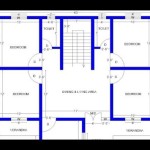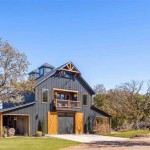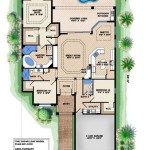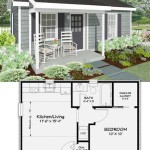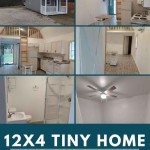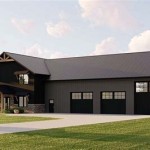Creating The Perfect Bluebird House: Plans and Free Printables
Bluebirds, known for their vibrant plumage and cheerful song, are a welcome addition to any backyard. Attracting these beneficial birds often involves providing suitable nesting habitats, primarily through the use of carefully constructed birdhouses. This article explores the process of creating the perfect bluebird house, highlighting readily available free printable plans and the key considerations for successful bluebird habitation.
The proper construction of a bluebird house is crucial for attracting and supporting these birds. A well-built house offers protection from the elements, predators, and competing bird species. Conversely, a poorly designed or constructed house may be ignored or even detrimental to bluebird populations. Factors like entrance hole size, internal dimensions, ventilation, drainage, and material selection all play vital roles in a bluebird house's success.
Fortunately, many resources offer free and comprehensive bluebird house plans. These plans often include detailed diagrams, material lists, and step-by-step instructions, making the construction process accessible to individuals with varying levels of woodworking experience. The availability of free printables makes it easy to translate these plans into tangible guidelines for building a suitable bluebird nesting site.
Key Considerations for Bluebird House Design
Several critical design elements are essential for a successful bluebird house. These elements contribute to the overall safety, comfort, and suitability of the house for bluebirds. Ignoring these considerations can significantly reduce the likelihood of attracting bluebirds or, worse, create a hazardous environment.
The entrance hole size is arguably the most crucial aspect of bluebird house design. An entrance hole that is too large can allow larger, more aggressive birds, such as house sparrows, to enter and displace or even kill the bluebirds. Conversely, an entrance hole that is too small will prevent bluebirds from entering. The ideal entrance hole size for bluebirds is 1 1/2 inches in diameter. This size effectively excludes larger birds while allowing bluebirds to enter and exit freely. Some experts suggest slightly altering this size depending on the regional bluebird species. For example, a 1 9/16 inch hole is often recommended for Eastern Bluebirds, while a slightly smaller hole, closer to 1 7/16 inches, can be used for Mountain Bluebirds. Oval entrances have also proven effective in deterring competing species while accommodating bluebirds. Regardless of the shape, accurate measurements are paramount.
Internal dimensions are another important consideration. The floor of the bluebird house should be approximately 5x5 inches. This provides ample space for the bluebird family. The height from the floor to the entrance hole should be between 6 and 8 inches. This depth helps protect the nest from predators and the elements. Insufficient depth renders the nest vulnerable, while excessive depth can make it difficult for fledglings to exit the house. A slightly taller house can also help moderate internal temperature, offering protection from extreme heat and cold.
Ventilation and drainage are essential for maintaining a healthy environment inside the bluebird house. Proper ventilation prevents the buildup of excess heat and moisture, which can be detrimental to the eggs and young birds. Ventilation holes, typically 1/4 inch in diameter, should be drilled near the top of the sides of the house. These holes allow for air circulation without exposing the nest to drafts. Drainage holes, usually 1/4 inch in diameter, should be drilled in the floor of the house to allow rainwater to escape. Standing water inside the house can lead to fungal growth and hypothermia, significantly reducing the survival rate of the young bluebirds. The number and placement of ventilation and drainage holes are usually specified in the bluebird house plans.
Selecting Materials and Construction Techniques
The materials used to construct a bluebird house significantly impact its durability and suitability for bluebirds. The choice of materials should prioritize natural, untreated options that provide insulation and pose no harm to the birds.
Untreated wood is the best choice for building a bluebird house. Cedar and redwood are excellent options due to their natural resistance to rot and insects. These woods are durable and require no chemical treatments, making them safe for the birds. Pine is another option, but it is less resistant to decay and may require more frequent maintenance. Avoid using pressure-treated wood, as the chemicals used in the treatment process can be harmful to bluebirds. Plywood should also be avoided as the glues used in its construction can off-gas potentially harmful volatile organic compounds (VOCs). Reclaimed wood can be a good option, provided it is free of paint, stains, and other treatments.
The construction methods used should also prioritize the safety and well-being of the bluebirds. Securely fasten all the pieces of the house together using screws or nails. Avoid using glue, as it can emit harmful fumes. Ensure that all edges are smooth to prevent injury to the birds. The roof should be designed to overhang the sides of the house to protect the entrance hole from rain. A hinged roof or side allows for easy cleaning and monitoring of the nest. Cleaning the birdhouse annually, after the nesting season, is crucial for removing old nests and preventing the buildup of parasites.
The texture of the interior walls is also important. Bluebird fledglings need to be able to climb out of the nest. Provide a rough interior surface by scoring the inside of the front wall below the entrance hole. This scoring provides a foothold for the fledglings, allowing them to climb to the entrance and exit the house. Alternatively, installing a small piece of hardware cloth on the inside of the front wall can provide similar climbing assistance.
Utilizing Free Printable Bluebird House Plans
Numerous organizations and individuals offer free bluebird house plans that can be easily downloaded and printed. These plans provide detailed instructions, diagrams, and material lists, making the construction process straightforward and accessible.
Several reputable sources offer free bluebird house plans. The North American Bluebird Society (NABS) provides a variety of plans designed to meet the specific needs of bluebirds. These plans are based on scientific research and are regularly updated to reflect the latest best practices. State and local wildlife agencies often offer bluebird house plans tailored to the specific environmental conditions of their region. Online woodworking forums and websites also offer a wealth of free plans and tutorials, often accompanied by helpful tips and advice from experienced builders.
When selecting a plan, carefully review the dimensions and specifications to ensure they align with the recommended guidelines for bluebird houses. Pay close attention to the entrance hole size, internal dimensions, ventilation, and drainage. Choose a plan that is clear, concise, and easy to follow. Consider your woodworking skills and select a plan that is appropriate for your experience level. Some plans are more complex and require advanced woodworking skills, while others are simpler and can be completed by beginners. It is always advisable to start with a simpler plan and gradually progress to more complex designs as your skills improve.
Once you have selected a plan, print it out and carefully review all the instructions and diagrams. Gather all the necessary materials and tools before you begin construction. Take your time and follow the instructions carefully. Double-check all measurements and cuts before assembling the house. If you encounter any difficulties, consult online resources or seek advice from experienced woodworkers. Remember that the goal is to create a safe and comfortable nesting site for bluebirds, so invest the time and effort necessary to ensure the house is well-built and meets all the essential design criteria.
Proper placement of the bluebird house is another crucial factor in attracting bluebirds. Bluebirds prefer open areas with scattered trees or shrubs. They need a clear flight path to the entrance of the house and a perch from which to survey the surrounding area. Avoid placing the house in dense woods or areas with heavy vegetation. Mount the house on a pole or post at a height of approximately 5 to 6 feet above the ground. Face the entrance hole away from prevailing winds to protect the nest from the elements. Monitor the house regularly for signs of nesting activity and take steps to deter competing bird species, such as house sparrows. By following these guidelines, you can create a bluebird house that will attract and support these beautiful and beneficial birds for years to come.

Creating Bluebird Habitat Free House Plans Bird

Bluebird House Plans For Eastern Blue Birds

Bluebird Bird House Plans Free Kits

Bluebird Birdhouse Plans Complete Step By Instructions For Building A Bird House

Blue Bird House Plans Free Diy Kits

Birdhouse And Nest Box Plans For Several Bird Species The Birders Report

Bluebird Nest Box Plans To Build From Scraps

Eastern Bluebird Birdhouse 70birds Plans Index

Birdhouse And Nest Box Plans For Several Bird Species The Birders Report

Bluebird Bird House Plans Birdhousebuzz Com
Related Posts

